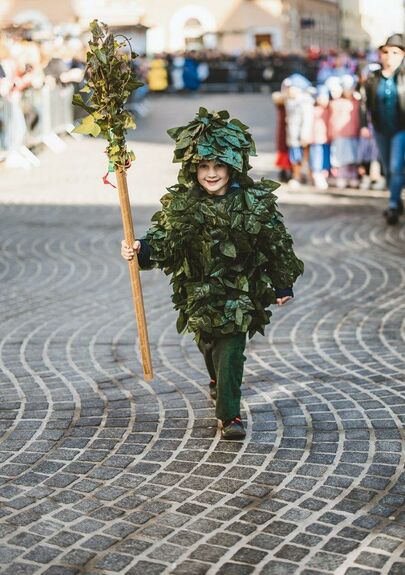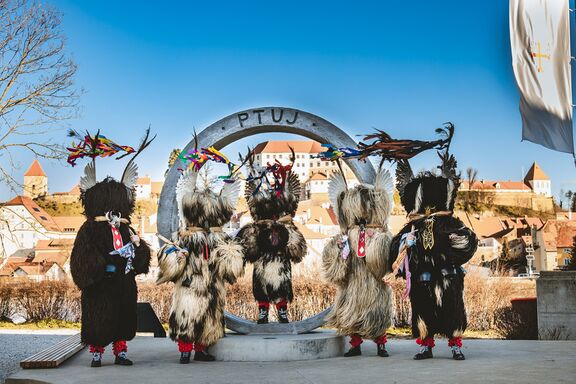Difference between revisions of "Kurentovanje"
(dates 2025) |
|||
| Line 20: | Line 20: | ||
| dates and duration = February, 11 days | | dates and duration = February, 11 days | ||
| duration weeks = 6,7,8 (2012) 5,6 (2013) 6,7,8,9,10 (2014) | | duration weeks = 6,7,8 (2012) 5,6 (2013) 6,7,8,9,10 (2014) | ||
| − | | festival dates = 2.2.2015 - 17.2.2015, 2.2.2016 - 9.2.2016, 17.2.2017 - 28.2.2017, 2.2.2018 - 13.2.2018, 23.2.2019 – 5.3.2019, 15.2.2020 – 25.2.2020, 15.2.2020 – 25.2.2020, 2.2.2021 – 16.2.2021, 19.2.2022 - 1.3.2022, 11.2.2023 - 21.2.2023, 3.2.2024 - 13.2.2024 | + | | festival dates = 2.2.2015 - 17.2.2015, 2.2.2016 - 9.2.2016, 17.2.2017 - 28.2.2017, 2.2.2018 - 13.2.2018, 23.2.2019 – 5.3.2019, 15.2.2020 – 25.2.2020, 15.2.2020 – 25.2.2020, 2.2.2021 – 16.2.2021, 19.2.2022 - 1.3.2022, 11.2.2023 - 21.2.2023, 3.2.2024 - 13.2.2024, 22.2.2025 - 4.3.2025 |
| contacts = {{Contact | | contacts = {{Contact | ||
| name = | | name = | ||
Latest revision as of 18:40, 4 December 2024
-
8 Mar 2014
The first big Slovene carnival in London, with Kurents from Ptuj and a concert by Zoran Predin, supported by the Embassy of the Republic of Slovenia London,
-
1 Mar 2014
The Second Annual Cleveland Kurentovanje, supported by the Embassy of the Republic of Slovenia Washington and Consulate General of the Republic of Slovenia in Cleveland, Ohio,
-
to
22 Feb 2014
23 Feb 2014
Kurents from the Ethnographic Society Kurent Ptuj at the traditional carnival Mulhouse, supported by the Embassy of the Republic of Slovenia Paris,
-
23 Feb 2013
-
to
6 Feb 2012
28 Feb 2012
Month of Culture: two publications related to Slovene art and heritage, Kurentovanje visiting Zagreb, donation of the chair Rex to the Croatian Museum of Arts and Crafts, co-organised by the Embassy of the Republic of Slovenia Zagreb
The origins
The name Kurentovanje derives from the festival's central figure, the Kurent, who, in earlier times, was believed to possess the power to chase away winter and usher in spring. The origins of both the Kurent and the Kurentovanje festivities are obscure, potentially stemming from earlier Slavic, Celtic, or Illyrian customs. Similar traditions are found throughout the region, extending to parts of Croatia, Hungary, Serbia, Bulgaria, and elsewhere. The Kurent costume is simple, consisting of a sheepskin hat and outfit, cow bells hanging from a chain belt, red or green wool socks, and black boots. However, the creation of the Kurent mask is a significant folk art in Slovenia, with only two masters of Kurent masks remaining – Master Klinc from Spuhlja and Master Zelenik from Markovci. The mask, crafted from leather, features two holes for the eyes and one for the mouth, surrounded by red paint. A trunk-like nose, whiskers made of twigs, and teeth made of white beans are attached, with the final touch being a long, red tongue.
Studies of the Kurent tradition have been conducted at Ptuj – Ormož Regional Museum and BISTRA Scientific Research Centre, Ptuj.
 Kurents' door-to-door rounds, Kurentovanje in Ptuj, 2023. Author: Stanko Vozel
Kurents' door-to-door rounds, Kurentovanje in Ptuj, 2023. Author: Stanko Vozel
European Capital of Culture 2012
Kurentovanje Festival has been included in the programme of the Maribor, European Capital of Culture 2012, Ptuj being one of its partner cities. The aim is to turn the festival in the largest ethno carnival in Europe. The ethnological guidelines were developed by Janez Bogataj and Aleš Gačnik, two scientists who acknowledge the constant metamorphoses and transformations of this tangible heritage.
 Kurents at the Ptuj Ring monument, Ptuj 2023. Author: Stanko Vozel
Kurents at the Ptuj Ring monument, Ptuj 2023. Author: Stanko Vozel
 Meet traditional carnival characters: Ploughmen, Kurentovanje in Ptuj, 2023. Author: Stanko Vozel
Meet traditional carnival characters: Ploughmen, Kurentovanje in Ptuj, 2023. Author: Stanko Vozel
See also
- Municipality of Ptuj
- Ptuj – Ormož Regional Museum
- BISTRA Scientific Research Centre, Ptuj
- Maribor, European Capital of Culture 2012
External links
Gallery
 Kurent or Korant, the most known and popular traditional carnival character in Slovenia, Kurentovanje, Ptuj 2023. +
Kurent or Korant, the most known and popular traditional carnival character in Slovenia, Kurentovanje, Ptuj 2023. +























